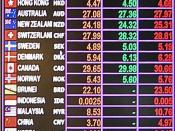The traditional theory of Optimum Currency Areas
Currency area is defined as the domain within which exchange rates are fixed (Mundell/1961). The benefits of a common currency are mainly microeconomic efficiency gains because of absence of transaction costs and ER risks and the costs are mainly macroeconomic loss of instrument of economic policy and adjustment mechanism. There is a difference between interregional adjustment and international adjustment even the exchange rates are fixed.
The theory of optimum currency areas is important for analyzing European monetary unification. OCA theory that focus on asymmetric shocks, labor mobility and the transactions value of a single currency subsumes some relevant considerations on the decision of whether to fix the exchange rate or form a monetary union. It has some difficulties to move from theory to empirical work and policy analysis. OCA theory focuses on characteristics which make stable exchange rates and monetary unification more or less desirable.
The most important of these are asymmetric shock to output, trade linkages, the usefulness of money for transactions, the labor mobility and the extent of automatic stabilizers.
A simple model
The starting point for Mundell's analysis is an asymmetric disturbance on the demand side. Suppose A and B are countries with national currencies. This disturbance is characterized by a demand shift away from the good which is produced in country A to the good which is produced in another country B (see figure 1.1). The adjustment process is under the assumption that the nominal wage rate and the price of other inputs remain constant. And another important assumption is that labor is completely immobile between the countries A and B. The shift of demand from A to B causes additional unemployment in A and leads to upward pressures on its price level in B.
From the figure below,


